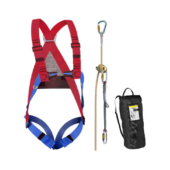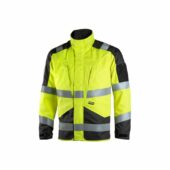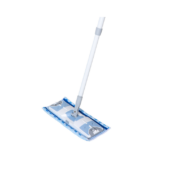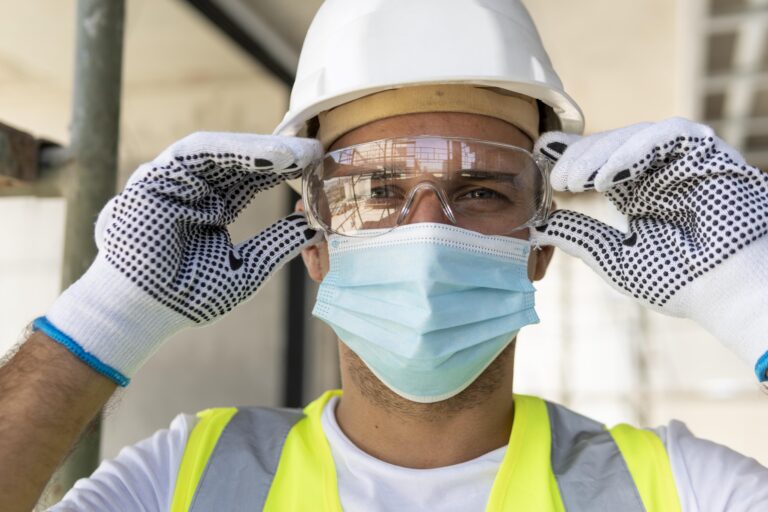Selecting the best impact-resistant gloves for your needs begins with understanding the ANSI/ISEA 138 Impact Protection Ratings, a critical framework for ensuring workplace safety. This guide not only explains these ratings in detail but also provides actionable steps for selecting gloves that match your specific requirements.
By addressing the important consideration of back-of-hand injuries in demanding environments, this standardized framework ensures informed, safety-driven choices.
Additionally, it prepares you for your next challenge: selecting gloves with multi-functional protection, such as anti-vibration or cut resistance.
For a broader overview of choosing the right gloves, explore our comprehensive Impact-Resistant Gloves Buyer’s Guide.
What is the ANSI/ISEA 138 Standard?
The ANSI/ISEA 138 standard, introduced in 2019, is the first North American standard to establish consistent criteria for impact-resistant gloves.
Unlike the EN 388 standard commonly used in Europe, which evaluates multiple protective factors such as cut and abrasion resistance, ANSI/ISEA 138 focuses specifically on the back-of-hand impact protection, providing a more targeted approach for industries requiring high-impact safety measures.
It evaluates the back-of-hand impact protection provided by gloves, helping users compare products across brands and applications. The standard is widely recognized in industries such as construction, oil and gas, and logistics.
Key highlights of ANSI/ISEA 138:
- Focus: Protecting the knuckles and fingers from impact injuries.
- Testing Methodology: Uses controlled impact testing to measure performance.
- Rating Levels: Classifies gloves into three performance levels based on impact resistance.
To learn more about the standard’s origins and testing specifics, check out this detailed guide.
Understanding ANSI/ISEA 138 Ratings
The standard assigns gloves one of three impact protection levels, helping buyers match the protection to their needs. For instance, Level 1 gloves are suitable for tasks with minimal impact risks, such as light assembly or general maintenance. Level 2 gloves offer moderate protection, ideal for industries like logistics or material handling. Level 3 gloves provide the highest level of protection, making them perfect for high-impact environments such as construction or oil and gas work.
| Rating | Performance Level | Impact Energy Transmitted |
| Level 1 | Basic impact resistance | <9 kilonewtons (kN) |
| Level 2 | Moderate impact resistance | <6.5 kN |
| Level 3 | High impact resistance | <4 kN |
These ratings are determined by testing the gloves under repeated impact conditions. A lower transmitted energy (measured in kN) indicates higher protection. Choosing the right rating depends on the level of risk in your specific workplace. The data referenced here is based on ANSI/ISEA 138 standard details from uvex-safety and HexArmor’s guide.
Who Benefits from ANSI/ISEA 138 Gloves?
Impact-resistant gloves are essential for workers in environments where tools, machinery, or heavy objects pose risks to the hands. Specific industries include:
- Construction: Protects against potential drops of tools and materials.
- Oil and Gas: Provides hand protection from rig equipment.
- Warehousing and Logistics: Prevents hand trauma during material handling.
For further insights into gloves designed for these sectors, read this article tailored to construction gloves. You can always return to the main article for a comprehensive guide on choosing the right impact-resistant gloves.
Comparing ANSI/ISEA 138 with EN 388 Standards
European users might be familiar with the EN 388 standard, which evaluates gloves based on cut, abrasion, tear, and puncture resistance. While EN 388 includes limited impact protection criteria, ANSI/ISEA 138 provides more robust and specific guidelines for back-of-hand impact resistance. If you’re navigating between these standards, consider your specific use case and the risks involved.
For more on gloves with multiple protection capabilities, explore cut-resistant gloves.
Key Features of ANSI/ISEA 138-Certified Gloves
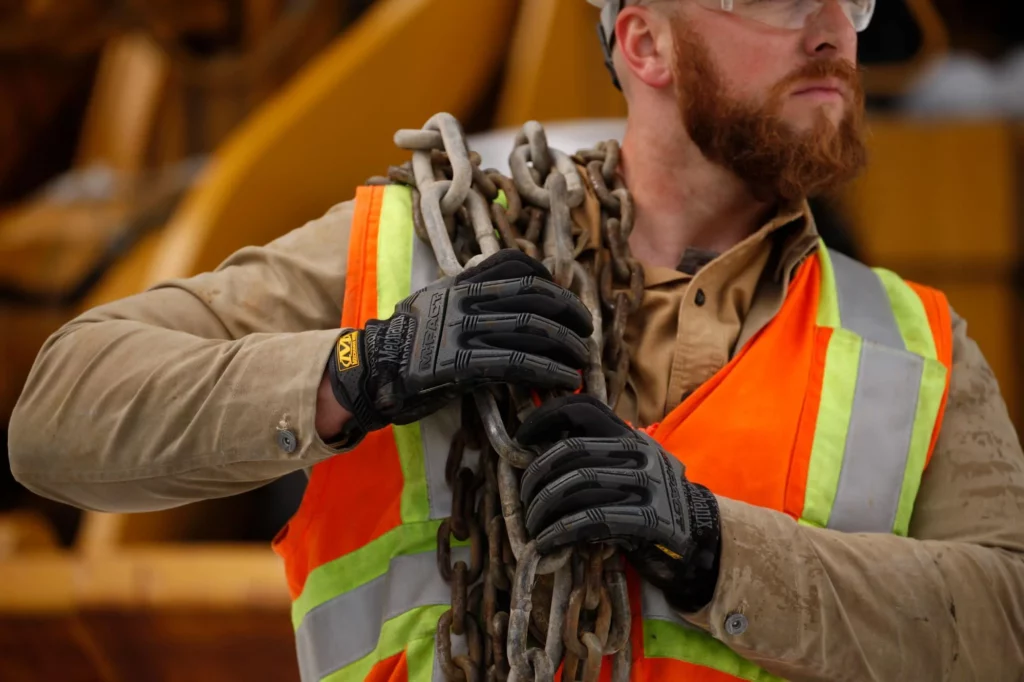
When selecting gloves certified under this standard, look for features that enhance both safety and usability:
- Impact-Resistant Padding: Protects critical areas like knuckles and fingers.
- Durable Materials: Often made with thermoplastic rubber (TPR) for shock absorption.
- Ergonomic Design: Ensures comfort and dexterity during prolonged use.
- Enhanced Grip: Ideal for handling slippery or heavy objects.
Browse our curated selection of impact-resistant gloves for top-rated options.
How to Choose the Right Impact Protection Level
Selecting the right gloves involves assessing your specific workplace hazards. Here’s a step-by-step guide:
- Identify Risks: Determine the type and intensity of impacts in your tasks.
- Choose the Rating: Match the ANSI/ISEA 138 rating to your risk level.
- Use Level 1 for low-risk environments.
- Opt for Level 3 in high-risk tasks, such as operating heavy machinery.
- Consider Additional Features: Look for added benefits like cut resistance or anti-vibration capabilities.
If vibration is a concern, consider anti-vibration gloves designed to reduce strain and injury.
Maintaining Compliance and Safety
Wearing ANSI/ISEA 138-compliant gloves is not only focused on personal safety; it’s also about ensuring compliance with workplace safety regulations. Regularly inspect your gloves for signs of usage, and replace them as needed to maintain protection.
For more tips on glove maintenance and safety, explore our work gloves guide.
Related Products and Guides
If you need additional protection or specialized features, consider exploring these categories:
- Anti-Vibration Gloves: Learn more
- Cut-Resistant Gloves: Explore options
- Safety Shoes: Find suitable products
Conclusion
We hope this guide has clarified the essential aspects of the ANSI/ISEA 138 standard, empowering you to make informed decisions about impact-resistant gloves for your unique safety requirements.
Additionally, this resource connects you to solutions for related challenges, such as finding gloves with multi-functional protection or understanding complementary standards. Explore our provided links to continue enhancing your safety and confidence on the job.
Whether you’re securing your hands in construction, oil and gas, or logistics, Droppe is here to support you every step of the way.
Explore our curated impact-resistant gloves collection to find certified options tailored to your needs. Have further questions or need guidance on selecting the best gloves for multi-functional protection? Don’t hesitate to reach out—we’re always ready to help you work confidently and safely.
Frequently Asked Questions
No, the ANSI/ISEA 138 standard specifically addresses back-of-hand impact protection and does not account for water or chemical resistance. If you require these features, look for gloves designed for chemical or water resistance alongside impact protection.
The lifespan of gloves depends on usage, the work environment, and the level of wear and tear. Regularly inspect gloves for visible damage, reduced padding, or compromised materials. Replace gloves immediately if their integrity is affected.
The ANSI/ISEA 138 standard does not test gloves for thermal resistance. For work in extreme temperatures, select gloves specifically designed for cold or heat resistance in addition to impact protection.
Not necessarily. Many gloves rated Level 3 are designed with ergonomic features and flexible materials to balance protection and dexterity. Always try on gloves to ensure a proper fit and comfort for prolonged use.
No, ANSI/ISEA 138 focuses exclusively on back-of-hand impact protection. For additional protection needs, such as cut, puncture, or abrasion resistance, look for gloves certified under standards like ANSI/ISEA 105 or EN 388.






